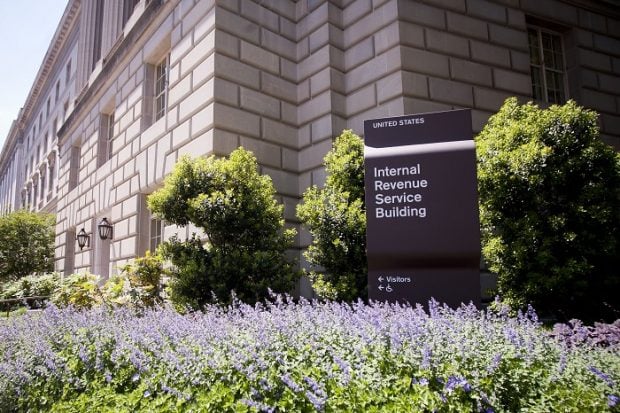 Contrary to otherreports, an employer's 401(k) match cannot be used to acceleratestudent loan payments. ERISA lawyer Jeffrey Holdvogt says that the5 percent match would go to a participant's 401(k) account and notto servicing student loan debt. (Photo: Diego M.Radzinschi/ALM)
Contrary to otherreports, an employer's 401(k) match cannot be used to acceleratestudent loan payments. ERISA lawyer Jeffrey Holdvogt says that the5 percent match would go to a participant's 401(k) account and notto servicing student loan debt. (Photo: Diego M.Radzinschi/ALM)
A private letter ruling from the IRS to an anonymous 401(k) plansponsor may create a template for other employers hoping to addressworkers' student loan debt burden.
|According to the letter, released last week, participants canearn the 401(k) plan's employer match without making their owncontributions to the plan, so long as participants can prove theyhave made payments to service student loan debt.
|The plan in question offers a generous match—the employer chipsin 5 percent of participants' salary after a 2 percent employeedeferral.
|Under the IRS's explanation, the employer can still match 5percent to a 401(k) account if a participant elects to pay at least2 percent of their salary to a student loan repayment.
|In effect, the letter permits the employer sponsor to addressthose workers who may be paying down student debt in lieu ofsaving for retirement.
|Jeffrey Holdvogt, a partner in the ERISA practice with McDermottWill & Emery, clarified that the 5 percent match would go to aparticipant's 401(k) account and not to servicing student loandebt.
|“The program that the IRS private letter ruling describes wouldadd a 5 percent contribution to the retirement plan–technically, anemployer 'non-elective' contribution–for those who verify that theymake sufficient student loan repayments,” said Holdvogt in anemail.
|“The benefit does not directly pay down an individual's loandebt,” he added. Some reports have indicated the employer's matchcould be used to accelerate student debt payments.
|Clearing employers' confusion
Participants in the plan would have to voluntarily opt in totake advantage of what the IRS letter calls a SLR—student loanrepayment.
|The ruling gives workers in the plan considerable latitude inhow they balance obligations to their student loans and theirfuture retirement security.
|For instance, if a worker doesn't make an SLR of at least 2percent of salary during a pay period, but does defer 2 percent totheir 401(k) account, the employer would still contribute the 5percent match. As long as the employee is deferring 2 percent ofearnings to either student loan debt or their retirement account,the employer would make the 5 percent match.
|And employees can defer contributions to the 401(k) even if theyalso pay the minimum 2 percent to their student debt.
|All told, 45 million Americans hold a total of $1.52 trillion instudent loan debt, accounting for the secondlargest source of consumer debt behind mortgages, according toFederal Reserve data.
|Those obligations present an impediment to retirement savings that employersponsors of defined contribution plans are increasingly consciousof.
|A 2016 study by the Plan Sponsor Council of America showed thatone in five plan sponsors with more than 1,000 participants wereconsidering adding a student loan repayment program as a workplacebenefit.
|Despite that interest, relatively few employers have takenaction. Only 1.4 percent of sponsors surveyed by the PSCA offered astudent debt repayment program.
|An absence of guidance from the IRS as to whether or not SLRprograms could be woven into 401(k) plans is one reason for theslack uptake.
|“Historically, many plan sponsors have questioned whether suchan approach would be permissible under IRS rules. As a result, todate, employers have been reluctant to create student loan benefitprograms that specifically link 401(k) plan contributions tostudent loan repayments,” writes McDermott Will & Emery'sHoldvogt and Sarah Engle, also a partner in the firm, in a blog post.
|The IRS's private ruling letter addresses only the circumstancesof the anonymous plan in question, and may not be used or cited asprecedent, the letter says.
|Nevertheless, Holdvogt and Engle expect the letter will motivatemore employers to follow suit.
|“The PLR will very likely cause many employers, particularlyemployers with a young and educated workforce, to consider offeringa student loan benefit as part of their retirement program,” theattorneys write.
|Sweetening the retirement savings incentive
The average student loan monthly payment for borrowers betweenthe age of 20 and 30 is $351, according to the Federal Reserve Bankof New York.
|For an employee earning $50,000 a year, or about $4,200 a month,the average monthly debt payment amounts to 8.63 percent ofearnings.
|If a hypothetical employee earning that much in the planaddressed in the IRS's letter can show they paid 2 percent ofmonthly earnings—or $84—to student debt, they would be eligible forthe employer's 5 percent match—$210 a month, or $2,520 a year.
|“This helps kill two birds with one stone,” said Mike Brown, aresearch analyst with LendEDU, a Hoboken, New Jersey-based startupthat provides a marketplace for student debt refinancing.
|“It's a great idea,” Brown said of the IRS's ruling letter. “Theaverage borrower has $28,000 in student debt. They have to worryabout making that payment on top of others, so they may not be ableto focus on saving for retirement.”
|LendEDU is part of a growing cadre of millennial-foundedstart-ups providing services to address workers' student debt burden.
|Goodly, a San Francisco-based start-up, is the newest entrant tothe space—its official launch was this month. The firm's web-basedplatform allows employers to enroll participants in a student debtmanagement program.
|“This is a great step in the right direction to making studentloan benefits a standard offering through the workplace,” said GregPoulin, co-founder of Goodly.
|Poulin, like many of the entrepreneurs in the space, ismotivated by personal experience with student debt. As a Dartmouthgraduate student, an untimely family death forced the refinancingof his education expenses. Poulin carried $80,000 in debt when hetrekked cross-country to start his career in the tech sector.
|Poulin underscores the competitive necessity of offeringbenefits that address student debt.
|“The student loan issue is a hair-on-fire problem,” he said.“Even for companies that do offer a match, it's a very tight labormarket. Every company has been trying to differentiate themselves.We think student loan benefits is something we will see a lot ofcompanies start to offer.”
|New and existing service providers to 401(k) plans can beexpected to model options based on the IRS's private rulingletter.
|But the movement to address student loans through 401(k) planscould benefit from more guidance from Treasury and regulators, saysChristine Roberts, an ERISA attorney and partner at SantaBarbara-based Mullen & Henzell.
|“Existing vendors who help employers contribute towards studentloan repayments will probably move to establish and market versionsof the SLR nonelective contribution program described in theprivate letter ruling, in which case additional, and more broadlyapplicable, IRS guidance would be welcome,” wrote Roberts in ablog post.
|“In the meantime, employers wishing to put such a program inplace should not assume that reproducing the facts in the ruling isa safe harbor from adverse tax consequences, and should consultlegal counsel to assess potential liability,” writes Roberts.
|READ MORE:
|9 ways to help 401(k) participants savemore
||Complete your profile to continue reading and get FREE access to BenefitsPRO, part of your ALM digital membership.
Your access to unlimited BenefitsPRO content isn’t changing.
Once you are an ALM digital member, you’ll receive:
- Critical BenefitsPRO information including cutting edge post-reform success strategies, access to educational webcasts and videos, resources from industry leaders, and informative Newsletters.
- Exclusive discounts on ALM, BenefitsPRO magazine and BenefitsPRO.com events
- Access to other award-winning ALM websites including ThinkAdvisor.com and Law.com
Already have an account? Sign In
© 2024 ALM Global, LLC, All Rights Reserved. Request academic re-use from www.copyright.com. All other uses, submit a request to [email protected]. For more information visit Asset & Logo Licensing.








